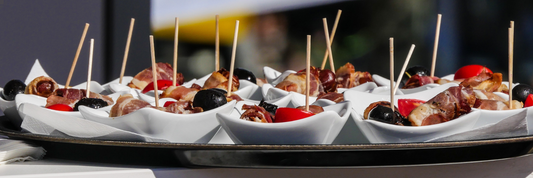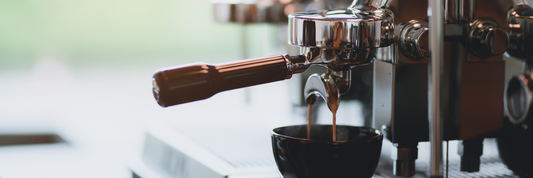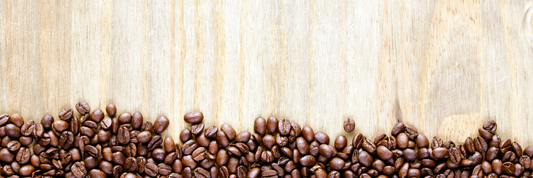Bubble tea has gained worldwide popularity with its unique flavors and chewy tapioca pearls. In the blog post below, we will explore everything you need to know about bubble tea, including its ingredients, how to make it, and its potential health benefits.
- What Is Taro Milk Tea? How To Make Taro Milk Tea?
- What is Golden Boba? How to Make Golden Boba Successful at Home?
- What is Crystal Boba? How to Make Crystal Boba Properly?
Bubble Tea Overview
What is Bubble Tea?
Bubble tea, also known as boba tea, boba, pearl milk tea, bubble milk tea or tapioca milk tea, is a sweet and refreshing drink made by combining tea, milk, and chewy tapioca pearls. It can be served cold or hot and is often customizable with various flavors and toppings. The name "bubble tea" comes from the bubbles that form on top of the drink when it is shaken.
Main Ingredients In Bubble Tea
Boba tea most commonly consists of tea accompanied by chewy tapioca balls, and it can be made with other toppings such as grass jelly, aloe vera, red bean, and popping boba.

Buble Tea History
Originated in Taiwan (1980s)
Boba Tea, also known as Pearl Milk Tea, originated in Taiwan in the 1980s. It was originally created in a small teahouse in Taichung, Taiwan by a teahouse owner named Liu Han Chieh. He experimented with adding fresh fruit to iced tea, creating a refreshing drink that was different from traditional teas.
In 1988, an employee of Chun Shui Tang Teahouse, named Lin Hsiu Hui, while attending a meeting, poured some pearl pudding (tapioca jelly) into his cold milk tea. This combination created an interesting and unique experience, which was quickly tested and added to the shop's menu. Immediately, this drink became extremely popular.
The Boom of Boba Tea in Taiwan (1990s)
After the appearance of bubble tea at Chun Shui Tang, many teahouses and restaurants in Taiwan began to add this dish to their menus. Each teahouse had its own unique way of making it, from using different types of tea to creating more types of pearls with various sizes and flavors. This created a boom of bubble tea nationwide.
During the 1990s, Boba Tea became an icon of Taiwanese street culture, loved by people of all ages. Tea shops quickly sprung up in major cities, and many companies began to develop specialized tea powders, syrups, and pearls to cater to the growing demand.
International Expansion (2000s)
In the early 2000s, the wave of Taiwanese immigration and the growth of Asian communities in Western countries helped Boba Tea gradually spread to the international market, starting with Asian countries such as Hong Kong, Singapore, Korea, Japan, and gradually to the US, Canada, and European countries.
In each country, Boba Tea is adjusted to suit local tastes. For example, in the US, this drink is often sweeter and comes with toppings such as popping boba, fruit jelly, and salty milk foam.
Innovation and Diversification of Boba Tea (2010s - present)
Since 2010, Boba Tea has become a global phenomenon with thousands of milk tea shops appearing around the world. This drink is no longer just milk tea with pearls, but has expanded to countless creative drinks such as: fruit tea, cheese cream tea, milkshake with boba, and milk tea variations with different toppings. Companies also began to produce convenient milk tea and pearl packages for consumers to mix at home. At the same time, many large and small chains of stores were born and developed strongly, creating a vibrant and competitive milk tea culture.
Why Is Bubble Tea So Popular?
Even though bubble tea has been around for a while, in the last few years it has become very popular, and it seems people can't get enough of it.
In fact, the platform Fortune Business Insights estimated that the drink's market was worth a whopping $2.17 billion (£1.76 billion) in 2021, and it is expected to continue expanding.
So why is the drink the subject of such a large buzz? It's hard to say for sure, but a lot of factors, like the wide variety of options, the beverage's taste and vibrant appearance, and the ability for customers to customize their drinks, are probably going to have an impact.

Types of Boba Tea
There are many different types of boba tea, including milk tea, fruit tea, and flavored tea.
- Milk Tea: is the most common type, which is made with black tea, milk, and sugar.
- Flavored Tea: These sweetened teas contain added flavorings but no milk (jasmine green tea, honey black tea).
- Juice: is made with fruit juice or fruit puree instead of milk
Popular Types of Bubble Tea
Classic Milk Tea
- Ingredients: Black tea (usually Assam or Earl Grey), milk (fresh milk, condensed milk, or milk powder), sugar or syrup, and black tapioca pearls (traditional boba).
- Flavor: This is the most basic type of bubble tea, with the rich and delicious flavor of black tea combined with the richness of milk. The chewy black tapioca pearls bring fun when chewing, while balancing the sweetness of milk tea. Classic Milk Tea often has a strong tea flavor, a light aroma from milk and sugar, creating a feeling that is both refreshing and rich.
Taro Milk Tea
- Ingredients: Pureed taro or taro powder, green tea or black tea, milk (fresh milk or milk powder), sugar, and tapioca pearls.
- Flavor: Taro Milk Tea has a characteristic purple color and natural sweetness from taro. The flavor of taro brings a rich, nutty, and slightly sweet taste, which is more prominent when combined with a light tea flavor. This type of milk tea is often loved for its natural sweetness and the characteristic aroma of taro, creating a pleasant and warm feeling.
Brown Sugar Milk Tea
- Ingredients: Fresh milk, black pearls, brown sugar syrup.
- Flavor: Brown Sugar Milk Tea does not contain tea, but focuses on the combination of rich fresh milk and the caramel sweetness of brown sugar syrup. Black pearls are cooked in brown sugar, creating a rich and sweet flavor with a hint of caramel smoky aroma. This is a milk tea with a rich, sweet, and creamy flavor, with a hint of the characteristic aroma of brown sugar caramel.
Thai Milk Tea
- Ingredients: Thai tea (usually Ceylon tea or red Thai tea), condensed milk, fresh milk or coconut milk, sugar, and ice.
- Flavor: Thai Milk Tea has a distinctive orange color and a rich, sweet flavor thanks to the combination of condensed milk and sugar. The aroma of Thai tea blends with the light aroma of coconut milk, creating a unique and attractive flavor. This tea is often served cold, bringing a fresh and sweet feeling, suitable for hot summer days.

Matcha Milk Tea
- Ingredients: Matcha powder (Japanese green tea), fresh milk or condensed milk, sugar, and tapioca pearls.
- Flavor: Matcha Milk Tea has a slightly bitter and refreshing taste of green tea, mixed with the richness of milk and a little sweetness from sugar. The bright green color of matcha also enhances the aesthetics of the milk tea. This is a popular choice for those who love the natural flavor and slight bitterness of matcha, and has many health benefits thanks to the antioxidants from green tea.
How to Make Bubble Tea at Home
Making bubble tea at home is a simple and fun process. Here is a basic recipe for bubble tea:
Bubble Tea Ingredients
The main ingredients for bubble tea are tea, milk, and tapioca pearls. However, other ingredients can be added to customize the flavor, such as fruit juice, fruit puree, or syrups. Some popular toppings include grass jelly, aloe vera cubes, and pudding.
- Ice
- 8-10 tea bags (black, green, or other strong tea of choice)
- 7 cups water plus the necessary quantity for boba balls (see packaging)
- Flavoring syrup (optional)
- 1 bag (8.8 oz) of tapioca pearls
- 2 cups granulated sugar or other sweeteners of desired quantity (optional)
- Whole milk (or a non-dairy option, such as coconut milk, soy milk, or nut milk)
Note: You can also use a convenient bubble tea powder to replace the tea.
Bubble Tea Instructions
- Step 1: Brew the tea of your choice by bringing 6 cups of water to a boil.
- Step 2: Remove the pot from the heat and add tea bags. Let sit until the tea reaches room temperature.
- Step 3: If using flavoring syrup, honey, or a thick sweetener, mix into tea while still warm to enable dissolving.
- Step 4: Make a simple syrup by adding 1 cup of water to a saucepan.
- Step 5: Heat until water is simmering, add in sugar, and stir until dissolved.
- Step 6: Let cool
- Step 7: Prepare the tapioca pearls in a separate pot.
- Step 8: Bring water to a boil (7-10 cups of water for every 1 cup of tapioca pearls)
- Step 9: Add tapioca pearls and cook for around 2-15 minutes (see instructions on bag), and stir occasionally.
- Step 10: Run lukewarm water over pearls, drain, and transfer to a new bowl.
- Step 11: Divide boba pearls between glasses.
- Step 12: Fill each glass with ice.
- Step 13: Pour 1 1/2 cups of tea into each glass.
- Step 14: Add 2-3 tbsp of milk and/or half and half to each glass.
- Step 15: If using a boba milk powder, add a scoop according to the product's instructions.
- Step 16: Stir with a spoon or shake well.
How to Decorate Bubble Tea
Decorating a cup of bubble tea not only makes the drink more eye-catching but also helps create a strong impression on customers. Here are some popular ways to decorate a cup of bubble tea to make it more attractive:
Create Unique Color Layers
- Method: Mix the color layers by pouring ingredients of different densities into the cup. For example, put brown sugar syrup or honey at the bottom of the cup, then add tea and milk. The bottom layer will be darker, creating an ombre effect.
- Note: Pour the layers gently so that they do not mix together immediately.
Use Heavy Cream and Whipped Crea
- Method: Add a layer of heavy cream or whipped cream on the surface of the milk tea cup. You can use a piping bag to create beautiful flower or spiral shapes.
- Additional decoration: Sprinkle a little matcha powder, cocoa powder, or cinnamon powder on top of the cream to create a highlight.
Use Unique Toppings
- Diverse tapioca pearls: Use different types of boba such as popping boba, traditional black tapioca pearls, or rainbow boba.
- Fruit jelly and jelly: Add fruit jelly, coconut jelly or pudding to add interest and variety to the drink.
- Fresh fruit: Place a few slices of fresh fruit such as strawberries, kiwi, oranges or a sprig of mint on top for freshness and color.
Use Special Cup and Straw Accessories
- Colorful straws: Use colorful straws or bamboo straws, patterned paper straws to increase aesthetics and be environmentally friendly.
- Clear cups with patterns: Choose clear cups so customers can see the layers of color of the drink, and you can also use cups with unique patterns or branding.
Create Shapes with Syrups or Chocolate
- Method: Use fruit syrup, brown sugar syrup, or chocolate to create spirals, diagonal lines, or draw decorative shapes inside the glass before pouring the milk tea in.
- How to make: Use a specialized shaping jar or a piping bag to draw syrup lines as desired.

Add Mint Leaves or Edible Petals
- Fresh mint leaves: Place a few mint leaves on top for added fragrance and freshness.
- Edible petals: Sprinkle a few edible petals such as roses, violets, or daisies on top of the drink for a luxurious and attractive look.
Get Creative with Colored Ice
- Fruit ice: Make ice cubes from fruit juice or green tea, matcha to add color and flavor to the drink.
- Clear ice cubes: Make sure the ice cubes are clear and clean, you can add a few berries such as blueberries or raspberries to the ice for more fun.
Use Unique Cup Lids
- Animal-shaped or 3D cup lids: Use cute animal-shaped or 3D embossed cup lids to create fun and attract young consumers.
Bubble Tea Toppings
Bubble tea can be topped with various ingredients to add texture and flavor to the drink. Some popular toppings include:
- Tapioca pearls (Crystal Boba, Popping Boba,....)
- Grass jelly
- Aloe vera cubes
- Pudding
- Boba jellies
- Red bean paste
Bubble Tea Flavors
Boba tea flavors range from fruity, sweet options to earthy, herbal options. Black tea, milk, ice, and tapioca pearls are the only ingredients in traditional bubble tea; however, you can add flavor to your beverage by choosing from a variety of boba tea varieties. Here are a few instances:
- Milk tea (original, thai, green, etc.)
- Fruit tea (strawberry, mango, passion fruit, etc.)
- Milkshake tea (chocolate, matcha, taro, etc.)
- Special flavors (rose, lavender, honeydew, taro milk tea, etc.)

Is Bubble Tea Healthy?
Bubble tea can be a healthier alternative to other sweetened beverages, depending on how it is prepared. It is lower in calories and sugar compared to drinks like soda or milkshakes. However, it is still important to consume it in moderation and consider the added sugar from syrups or toppings.
Bubble Tea FAQs
What Is Boba?
Boba, also known as tapioca pearls, are small, chewy balls made from tapioca starch. They are often used in bubble tea but can also be added to other drinks and desserts.
What Is Boba Made of?
Boba is made from tapioca starch, which comes from the cassava root. Sometimes, food coloring and flavoring are added to give it a specific color and taste.
What Is Popping Boba?
Popping boba is a type of boba that contains a small amount of fruit juice or syrup inside. When you bite into it, the juice or syrup "pops" in your mouth, giving an extra burst of flavor.
How to Drink Bubble Tea?
Bubble tea can be enjoyed in various ways, depending on your preference. You can use a straw to sip the drink and chew on the boba pearls, or you can mix everything together and eat the drink with a spoon.
What Is the Difference Between Bubble Tea and Milk Tea?
Bubble tea and milk tea both contain tea and milk, but bubble tea also includes chewy tapioca pearls. Milk tea is typically lighter in flavor and texture, while bubble tea has a more diverse range of flavors and textures due to the added boba pearls and toppings.




